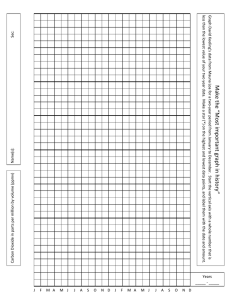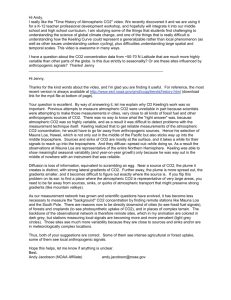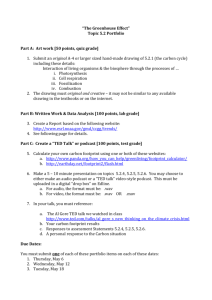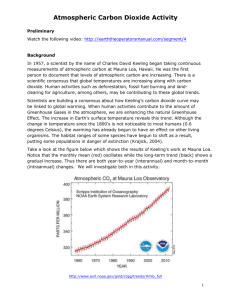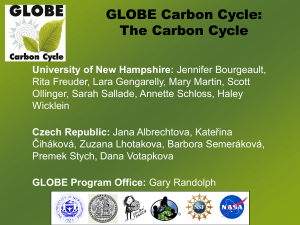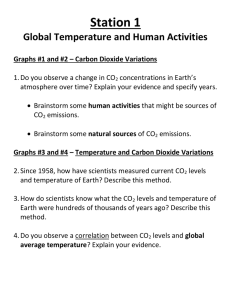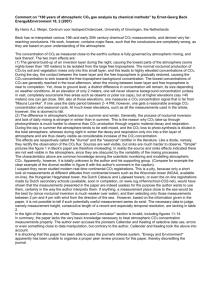Episode 1 -- How do we know CO2 is increasing?
advertisement
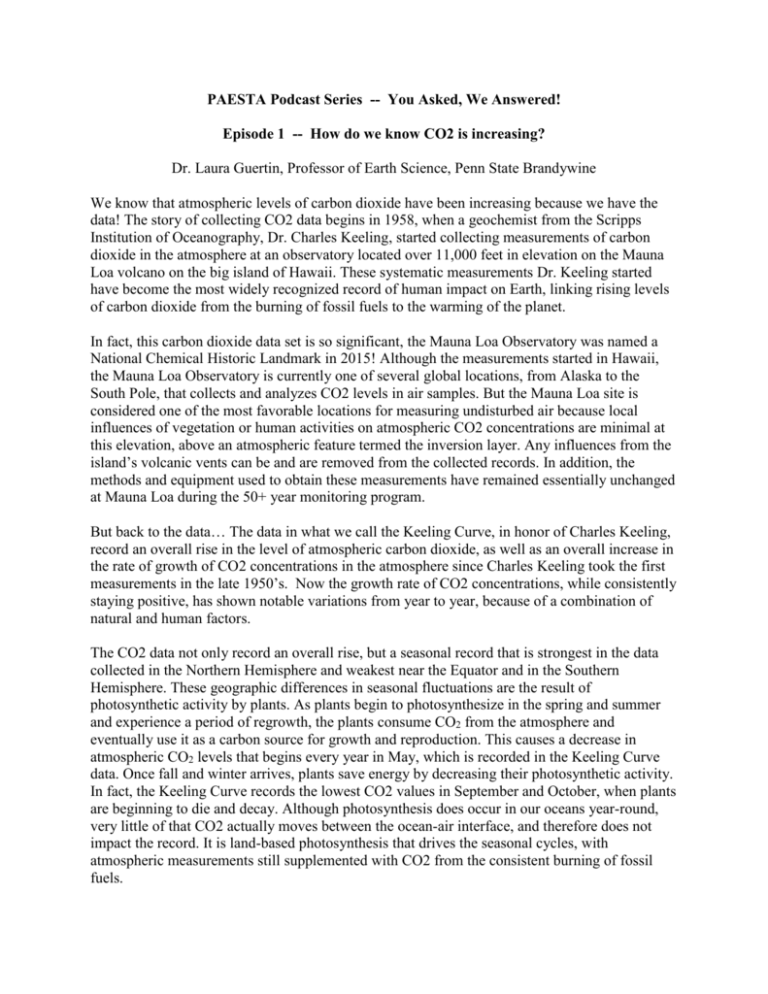
PAESTA Podcast Series -- You Asked, We Answered! Episode 1 -- How do we know CO2 is increasing? Dr. Laura Guertin, Professor of Earth Science, Penn State Brandywine We know that atmospheric levels of carbon dioxide have been increasing because we have the data! The story of collecting CO2 data begins in 1958, when a geochemist from the Scripps Institution of Oceanography, Dr. Charles Keeling, started collecting measurements of carbon dioxide in the atmosphere at an observatory located over 11,000 feet in elevation on the Mauna Loa volcano on the big island of Hawaii. These systematic measurements Dr. Keeling started have become the most widely recognized record of human impact on Earth, linking rising levels of carbon dioxide from the burning of fossil fuels to the warming of the planet. In fact, this carbon dioxide data set is so significant, the Mauna Loa Observatory was named a National Chemical Historic Landmark in 2015! Although the measurements started in Hawaii, the Mauna Loa Observatory is currently one of several global locations, from Alaska to the South Pole, that collects and analyzes CO2 levels in air samples. But the Mauna Loa site is considered one of the most favorable locations for measuring undisturbed air because local influences of vegetation or human activities on atmospheric CO2 concentrations are minimal at this elevation, above an atmospheric feature termed the inversion layer. Any influences from the island’s volcanic vents can be and are removed from the collected records. In addition, the methods and equipment used to obtain these measurements have remained essentially unchanged at Mauna Loa during the 50+ year monitoring program. But back to the data… The data in what we call the Keeling Curve, in honor of Charles Keeling, record an overall rise in the level of atmospheric carbon dioxide, as well as an overall increase in the rate of growth of CO2 concentrations in the atmosphere since Charles Keeling took the first measurements in the late 1950’s. Now the growth rate of CO2 concentrations, while consistently staying positive, has shown notable variations from year to year, because of a combination of natural and human factors. The CO2 data not only record an overall rise, but a seasonal record that is strongest in the data collected in the Northern Hemisphere and weakest near the Equator and in the Southern Hemisphere. These geographic differences in seasonal fluctuations are the result of photosynthetic activity by plants. As plants begin to photosynthesize in the spring and summer and experience a period of regrowth, the plants consume CO2 from the atmosphere and eventually use it as a carbon source for growth and reproduction. This causes a decrease in atmospheric CO2 levels that begins every year in May, which is recorded in the Keeling Curve data. Once fall and winter arrives, plants save energy by decreasing their photosynthetic activity. In fact, the Keeling Curve records the lowest CO2 values in September and October, when plants are beginning to die and decay. Although photosynthesis does occur in our oceans year-round, very little of that CO2 actually moves between the ocean-air interface, and therefore does not impact the record. It is land-based photosynthesis that drives the seasonal cycles, with atmospheric measurements still supplemented with CO2 from the consistent burning of fossil fuels. So to return to the original question… how do we know CO2 is increasing? We know atmospheric carbon dioxide has been increasing from 1958 to the present from measurements collected across the globe, from the data that show us an overall increase in atmospheric CO2 over time, an increase in the rate of CO2 growth over time, and a record of seasonal variations of CO2 values. (audio recorded July 2, 2015)
